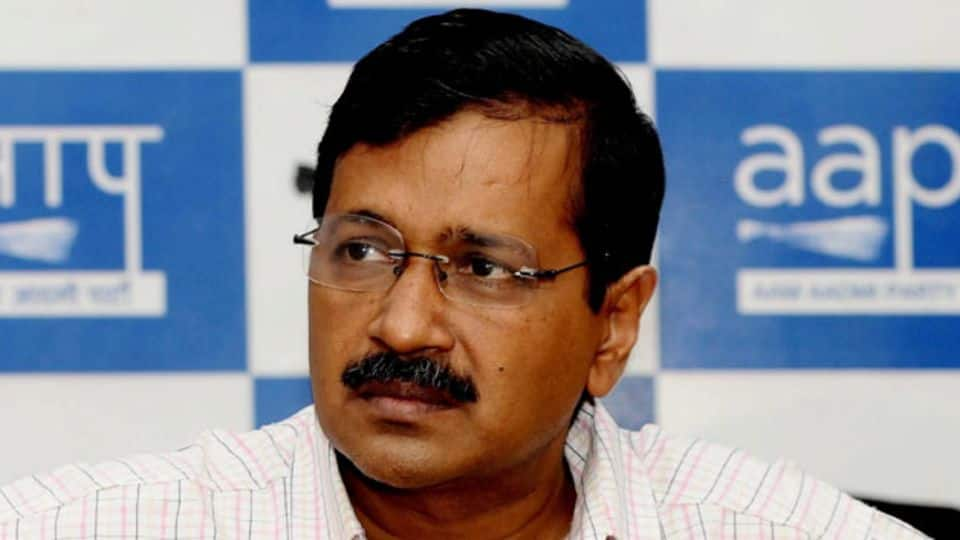
AAP completes three years in office: How did they fare?
What's the story
It has been three years since Arvind Kejriwal's Aam Aadmi Party (AAP) stormed to power in Delhi with a brute majority, winning 67 of 70 Assembly seats.
AAP, an off-shoot of the 'India Against Corruption' Movement, used populist policies and "Paanch Saal Kejriwal" to rewrite Delhi's political landscape, dominated by BJP and Congress until then.
So, how has the political "toddler" fared at governance? We analyze.
Promises
What had AAP promised?
Before AAP wrested power, it wanted to be different. It promised affordable clean drinking water, reduced electricity bills and 900 new primary healthcare centres to woo the aam aadmi.
For Delhiites, it pushed for Delhi's full statehood and the Swaraj bill to devolve power to the people.
For combating corruption, it promised a Delhi Jan Lokpal.
But, has it succeeded?
Successes
What did the Kejriwal government succeed at?
Though AAP has provided cheap power and free water (20 kilolitres/month), implemented the odd-even car scheme and set up Mohalla Clinics, these have had shoddy implementation.
The government's main achievements have been in education. Here, they first focused on teachers training, followed by infrastructure and creative learning methods. They have succeeded in building over 8,000 classrooms and stopped private schools from hiking fees.
Failures
AAP government, however, faced brickbats on most counts
AAP's major drawback was its knee-jerk reactions for controlling Delhi's alarming pollution. Despite public anger, they tried the odd-even scheme and took half-hearted measures like cloud-seeding and sprinkling water from choppers. As a long-term measure, it failed to add a single DTC bus to its fleet.
Most ideas like the Swaraj Bill and setting up its own power plant have been quashed as impractical.
Do you know?
Kejriwalji, where is the widely-promised free Wi-Fi?
Separately, Kejriwal faced flak as the much-promised free Wi-Fi is nowhere seen. This was one of its flagship promises and a vote-puller among the youth. However, he claims this year, government is going to allot full budget for this. Is this just another empty promise?
Future
Now, what are their future policy plans?
After crossing the half-way mark, deputy CM Manish Sisodia says Delhi's governance is now in the fourth gear.
Now, it plans to provide doorstep delivery of services, install CCTVs, roll-out 1000 AC electric buses, provide health card detailing patients' medical history and beautify 500kms of roads among other things.
Until now, it has failed miserably. With two years left, will it make a comeback?
Controversies
Besides, AAP's governance stint is dogged by controversies
AAP's three years were marked by the government's tug of war with the Centre/Lieutenant Governor over Delhi's administrative jurisdiction. Their consistent complaining also irked the Delhi High Court which asked them to do their duty.
More recently, 20 of its MLAs were disqualified for holding office of profit.
AAP also faces internal dissent with ambitious leaders like Kumar Vishwas slamming the party's top leadership.
Altered Kejriwal
But, how has Kejriwal changed in these three years?
However, a notable change has been Kejriwal's mellowed-down approach compared to his fire-brand politics against PM Modi.
For example, in the past 11 months, he hasn't tweeted about "Modi" even once. In contrast, "Modi" featured 124 times in 2016 and 33 times in 2017 in his tweets.
This behavior is attributed to election losses in Punjab, Goa, Delhi civic polls and Rajouri garden by-polls.
Future
In conclusion, what does the future hold for AAP?
AAP needs to pull up its socks to remain relevant. More so as it faces mid-term elections after 20 of its MLAs were disqualified. The disqualification also attacked AAP's main tenet of being corruption-free.
Further, as dissent against Kejriwal and his small coterie's autocracy increases, as seen during the RS elections nominations, AAP might have to work to restoring its internal democracy.